Golden-headed lion Tamarind
Golden-headed lion Tamarind
Publié par Angelique le Sunday 5 May 2024
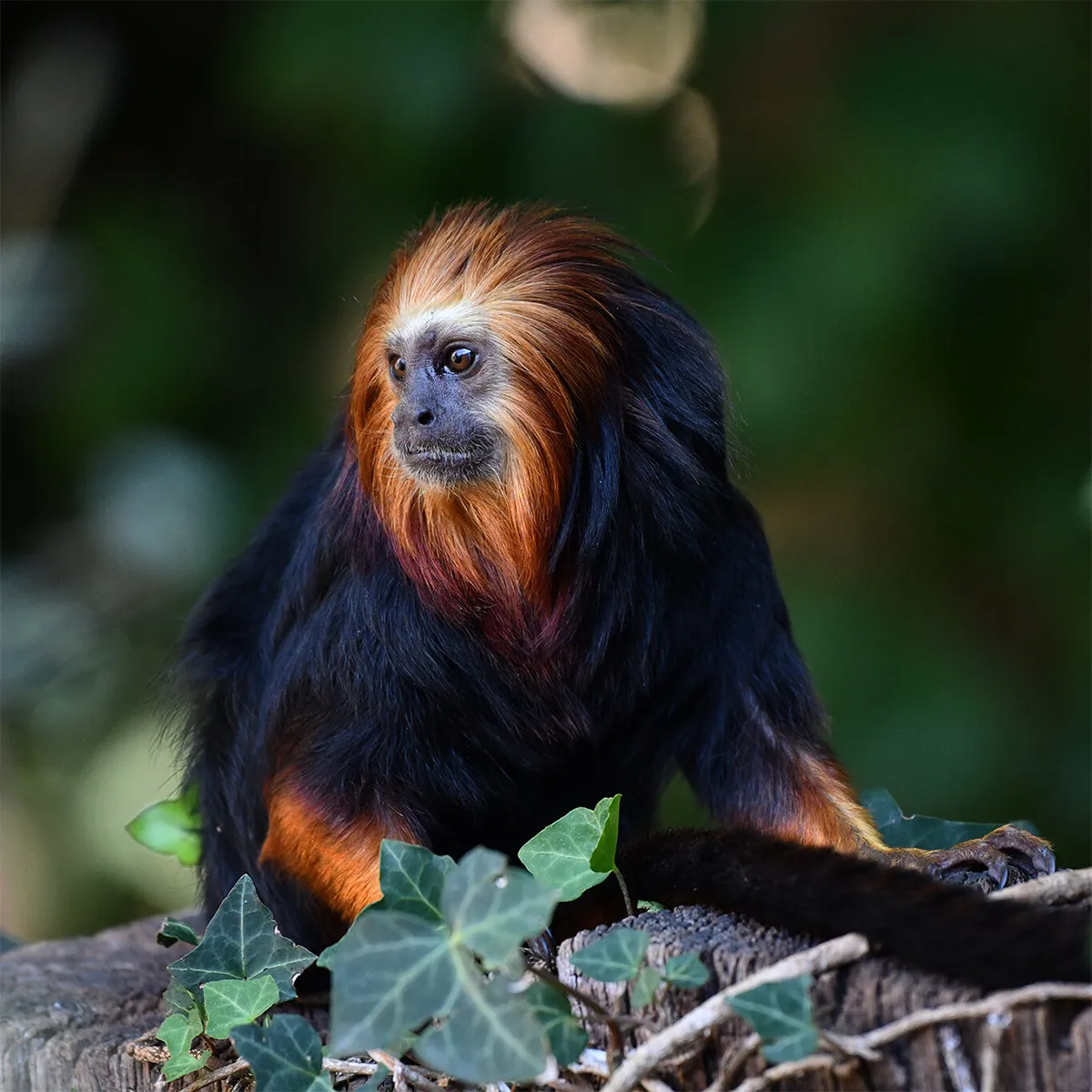
A cousin of the golden lion tamarin, the golden-headed lion tamarin has a black coat, except for the forearms, part of the tail and the mane around the face, which are golden. Threatened by deforestation, fewer than 6,000 remain in the wild, and the species is considered endangered in the wild.
Retour au blog Partager : Facebook Twitter
Peruvian squirrel monkey
Publié par le Friday 19 April 2024
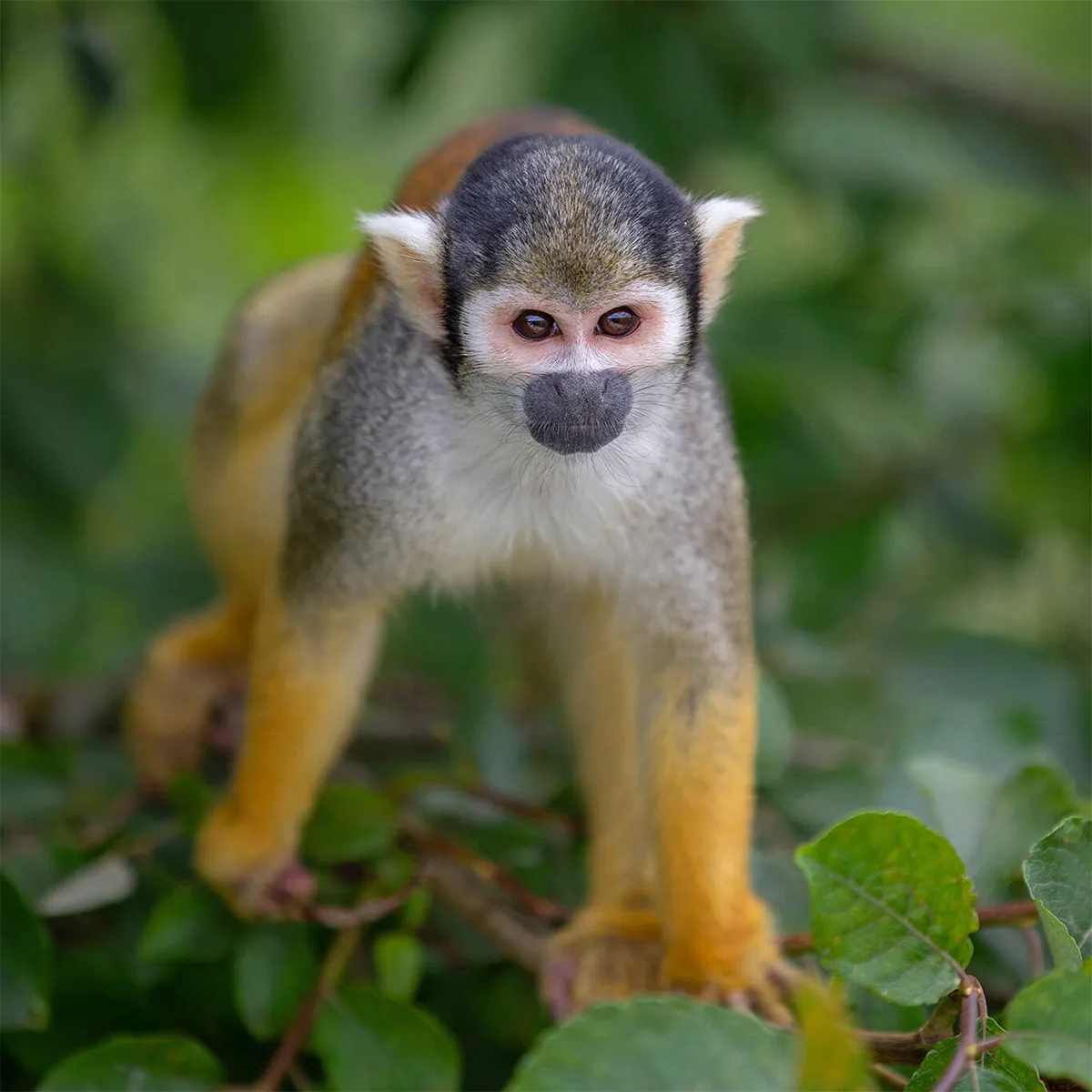
A small South American monkey, the saimiri is easily recognized by its yellow fur on its legs. Social and gregarious, they can live in groups of several dozen individuals. Among the saimiris we practice allomothering. This means that females cooperate to raise young as a community.
Retour au blog Partager : Facebook Twitter
Pileated gibbon
Publié par le Monday 2 August 2021
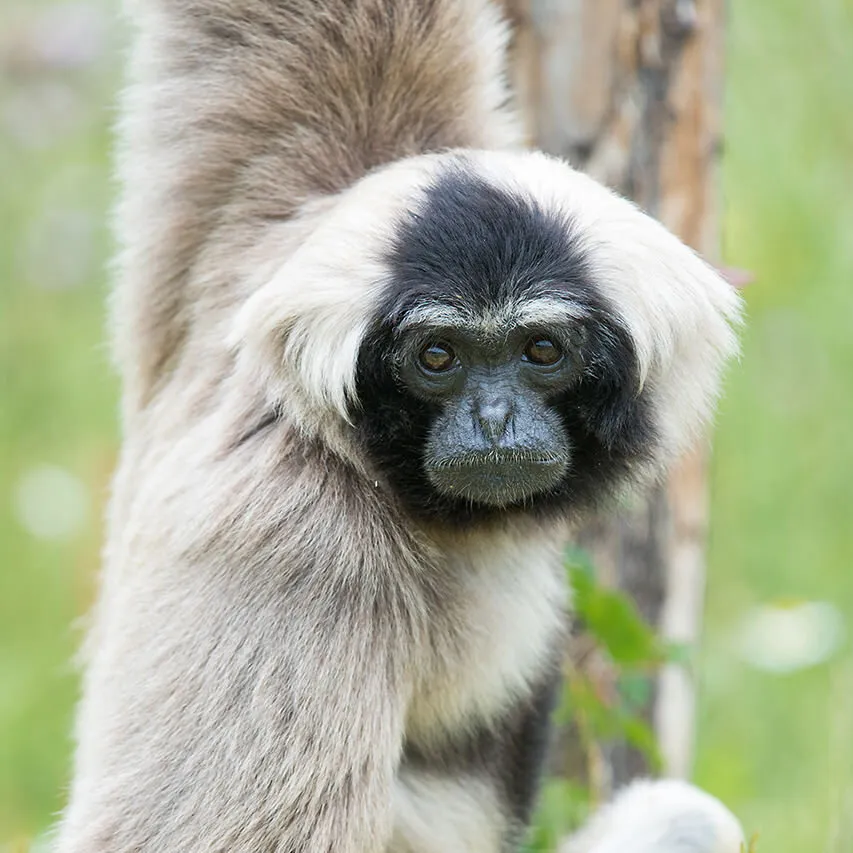
Pairs of gibbons sing duets to mark out their territory. Gibbons are models of fidelity. Once a pair is formed, it’s for life. In the bonneted gibbon, the male is black with a white face mask, while the female is white with a black face mask.
Retour au blog Partager : Facebook Twitter
Lion-tailed macaque
Publié par le Monday 2 August 2021
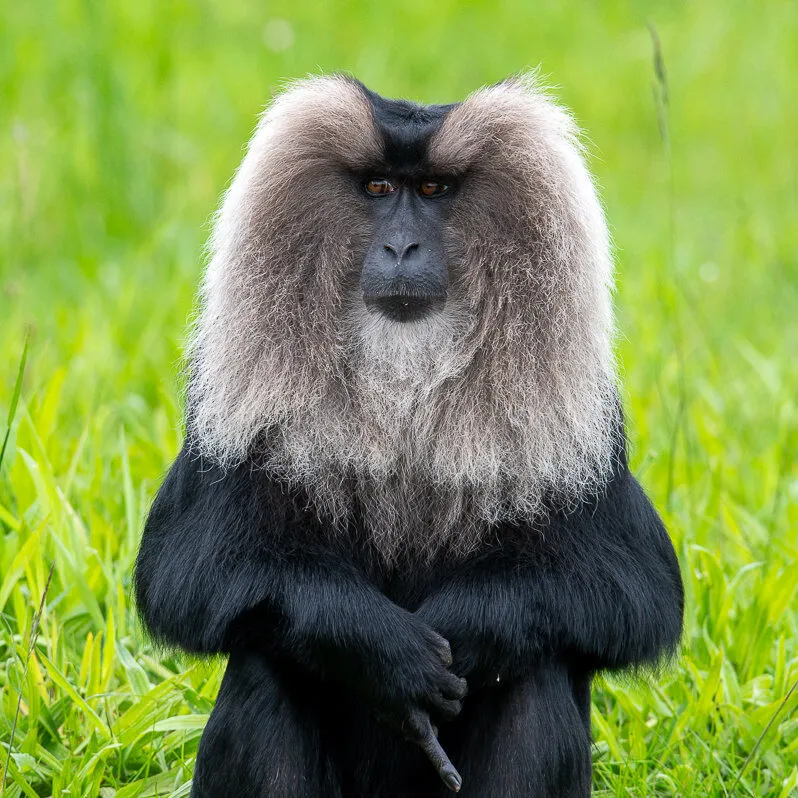
This primate is characterized by its lion-like gray mane. Males are much larger than females. Native to western India, the wild population is in decline, mainly due to habitat destruction.
Retour au blog Partager : Facebook Twitter
Black howler
Publié par le Monday 2 August 2021
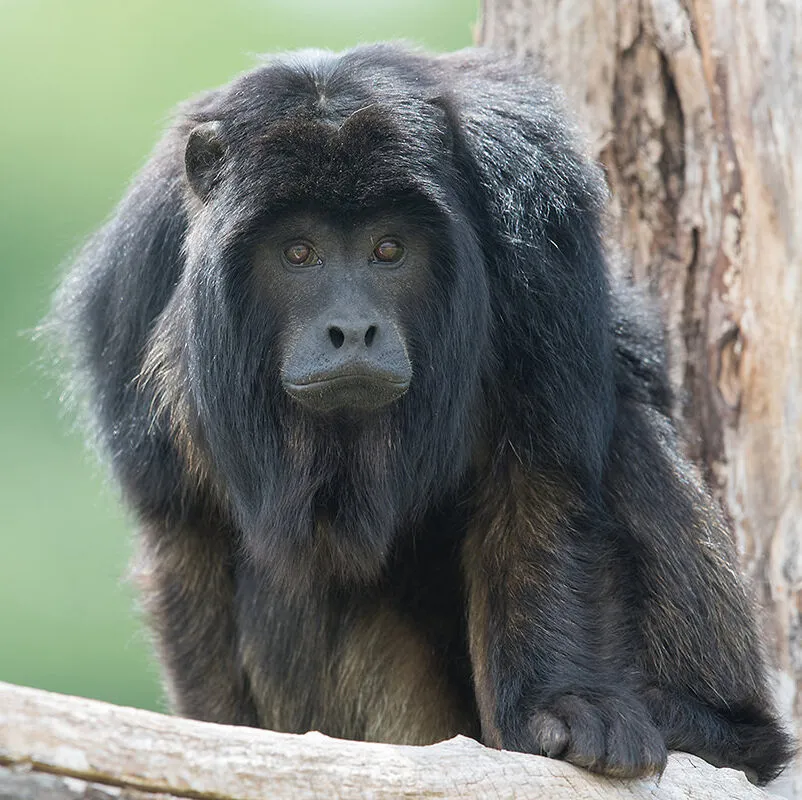
Described as a diplomatic monkey, the black howler’s territorial calls can be heard up to 16km away. This is more than enough to discourage neighboring groups from starting a conflict. Males are characterized by their black coats, while females have brown coats.
Retour au blog Partager : Facebook Twitter
Variegated spider monkey
Publié par le Monday 2 August 2021
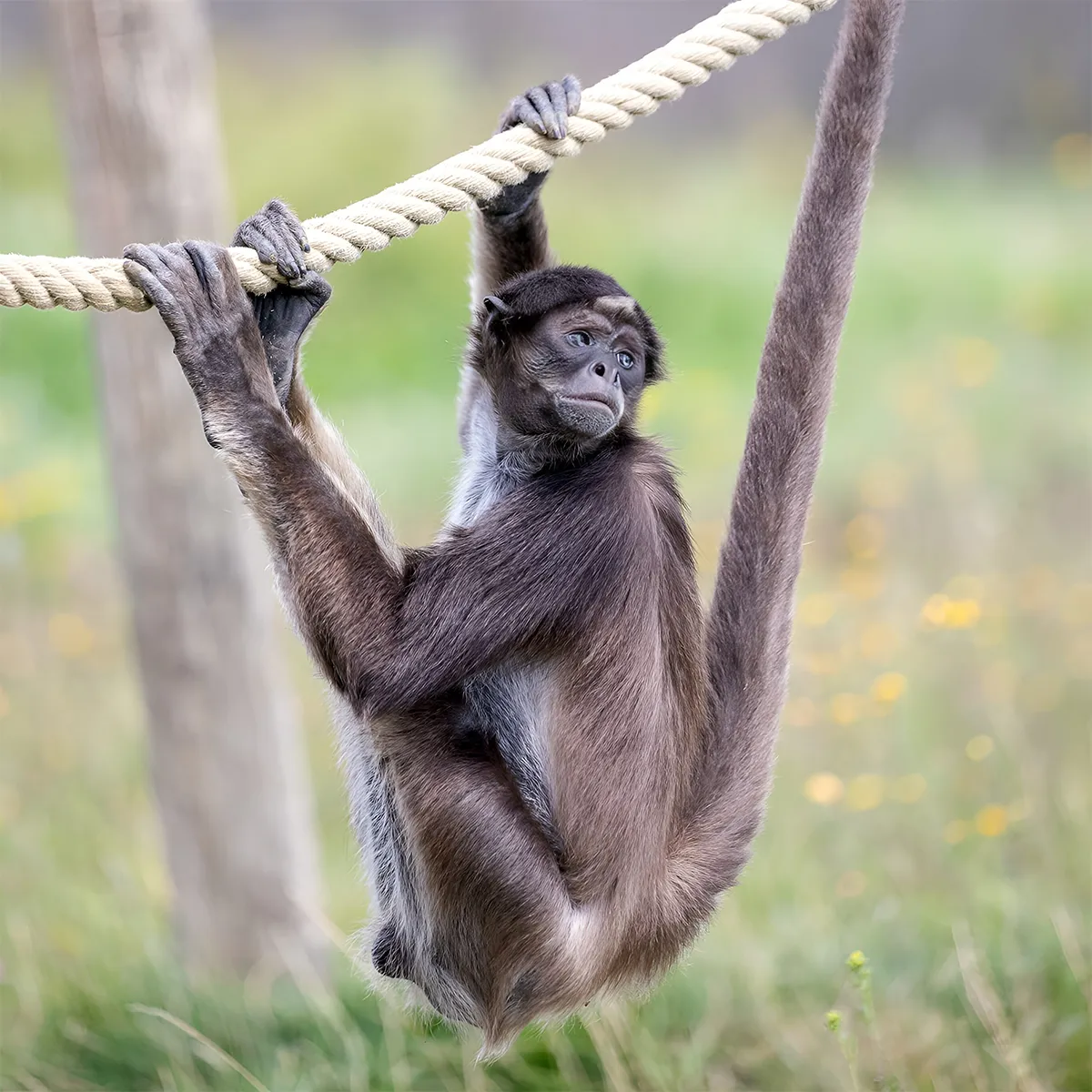
Ateles are characterized by a prehensile tail that can be associated with a fifth hand. Exclusively arboreal, various ateles have been on the sad list of the 25 most endangered primate species since 2004.
Retour au blog Partager : Facebook Twitter
Yellow-breasted capuchin
Publié par le Monday 2 August 2021
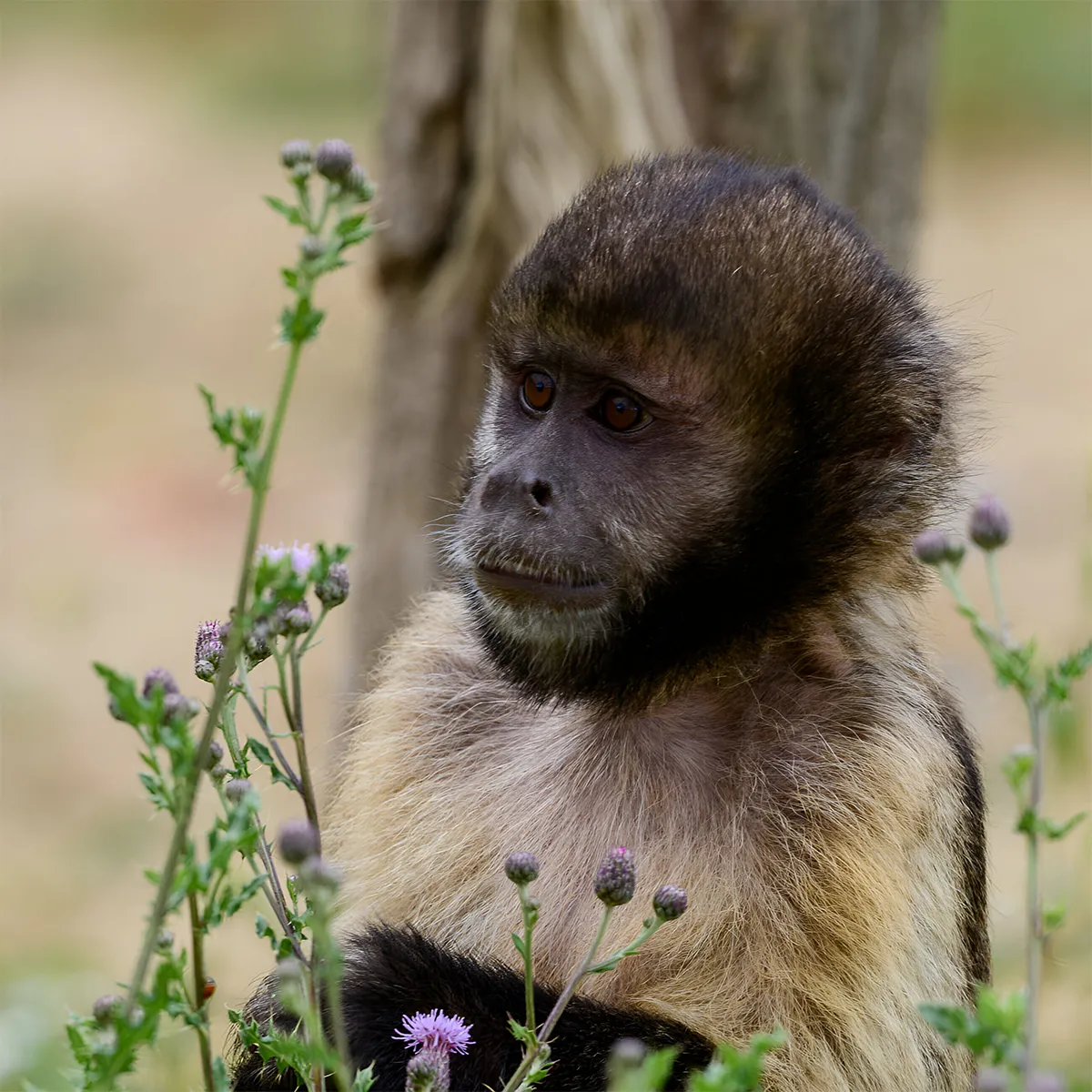
The yellow-breasted capuchin monkey is one of the rare primate species to use tools, such as stones as nutcrackers. Highly expressive through their facial mimics, these monkeys are still being studied by scientists to understand the evolution of cognitive abilities, and by extension the evolution of mankind.
Retour au blog Partager : Facebook Twitter
Common marmoset
Publié par le Monday 2 August 2021
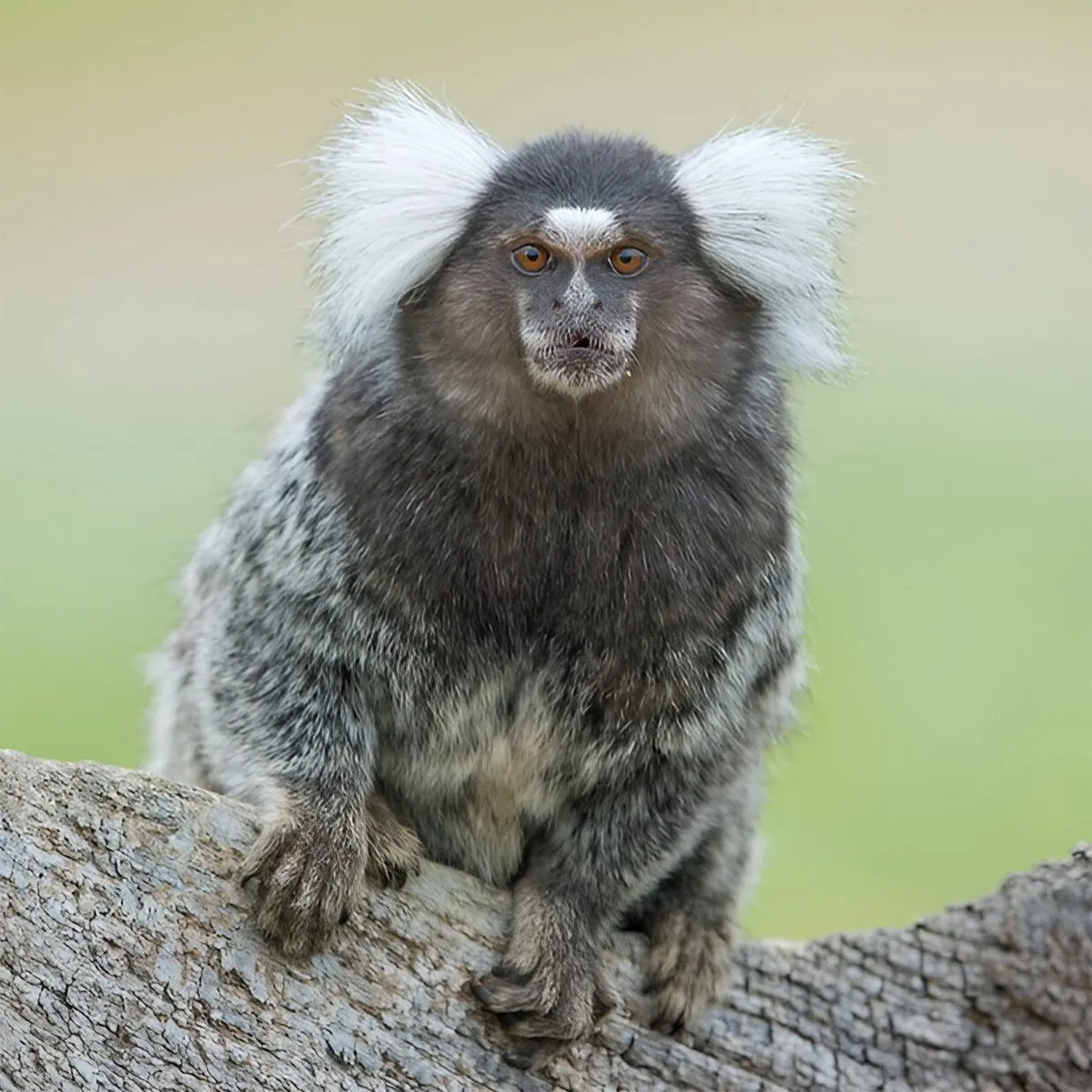
Also known as the paintbrush marmoset, this small South American monkey specializes in eating tree gum. To extract it, it uses its incisors to dig small holes in tree bark.
Retour au blog Partager : Facebook Twitter
Cotton-top tamarin
Publié par le Monday 2 August 2021

Among the callithrichids, the cotton-top tamarin is easily recognized by its white crest. Its prominent lower canine teeth give the illusion that it is wearing tusks… Critically endangered, it suffers mainly from accelerated deforestation in Brazil.
Retour au blog Partager : Facebook Twitter
Pygmy marmoset
Publié par le Monday 17 May 2021
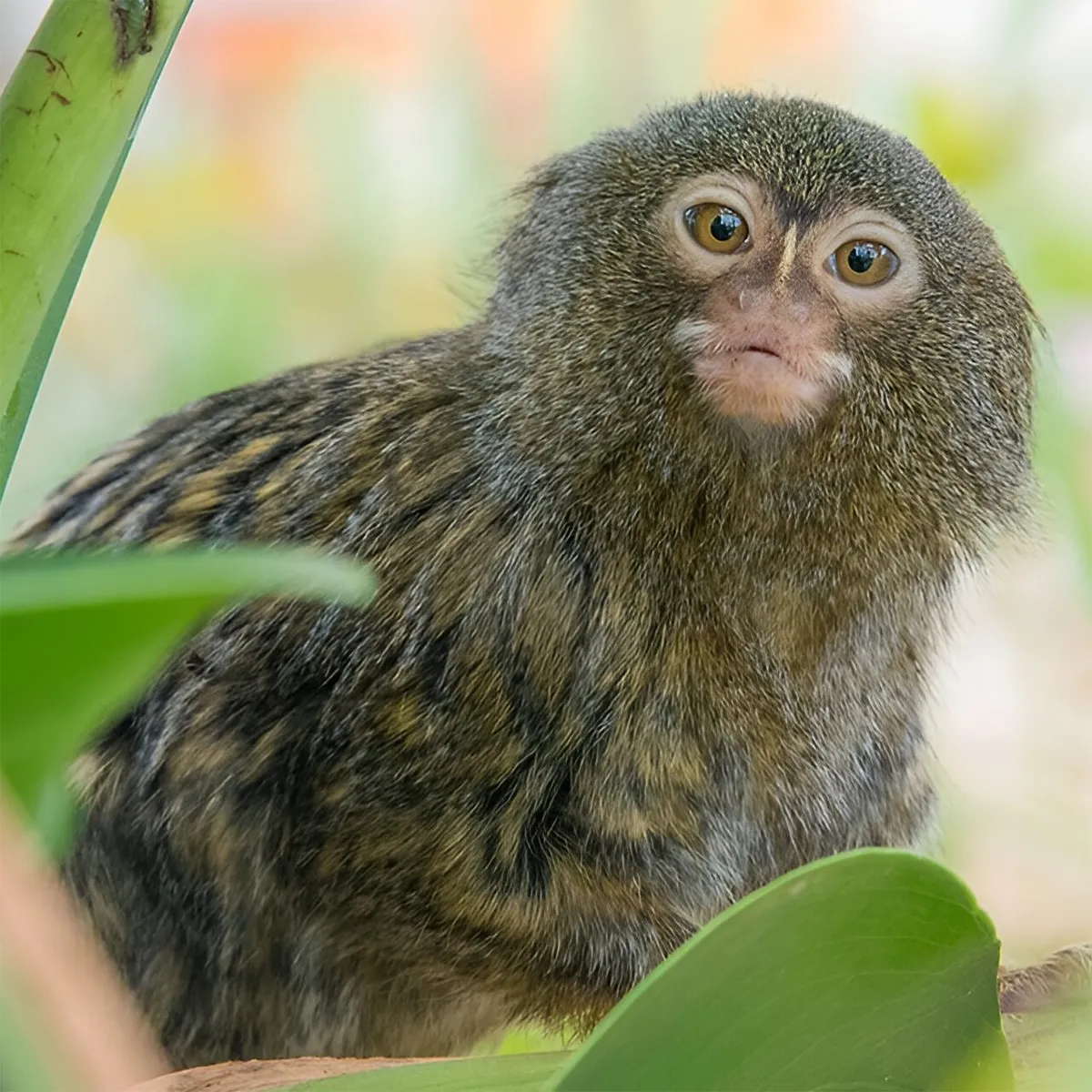
It is the smallest of the monkeys, weighing just 100 g and measuring 10 to 15 cm. Because of its small size, it has many more predators than other monkeys. It has the peculiarity of being able to turn its head 180° to scan the horizon.
Retour au blog Partager : Facebook Twitter
White-faced saki
Publié par le Saturday 6 June 2020

Here’s a primate with an unusual head. With its facial disk (white for males, gray for females), the white-faced saki lives in the north of the South American continent. They generally live in the lower levels of the canopy, feeding mainly on fruit, nuts, leaves and insects. Diurnal, these small primates live in pairs for life. However, this does not prevent them from forming small groups of up to 12 individuals. Unlike most other arboreal primates, the saki moves around by jumping from branch to branch.
Retour au blog Partager : Facebook Twitter
Patas
Publié par le Saturday 6 June 2020
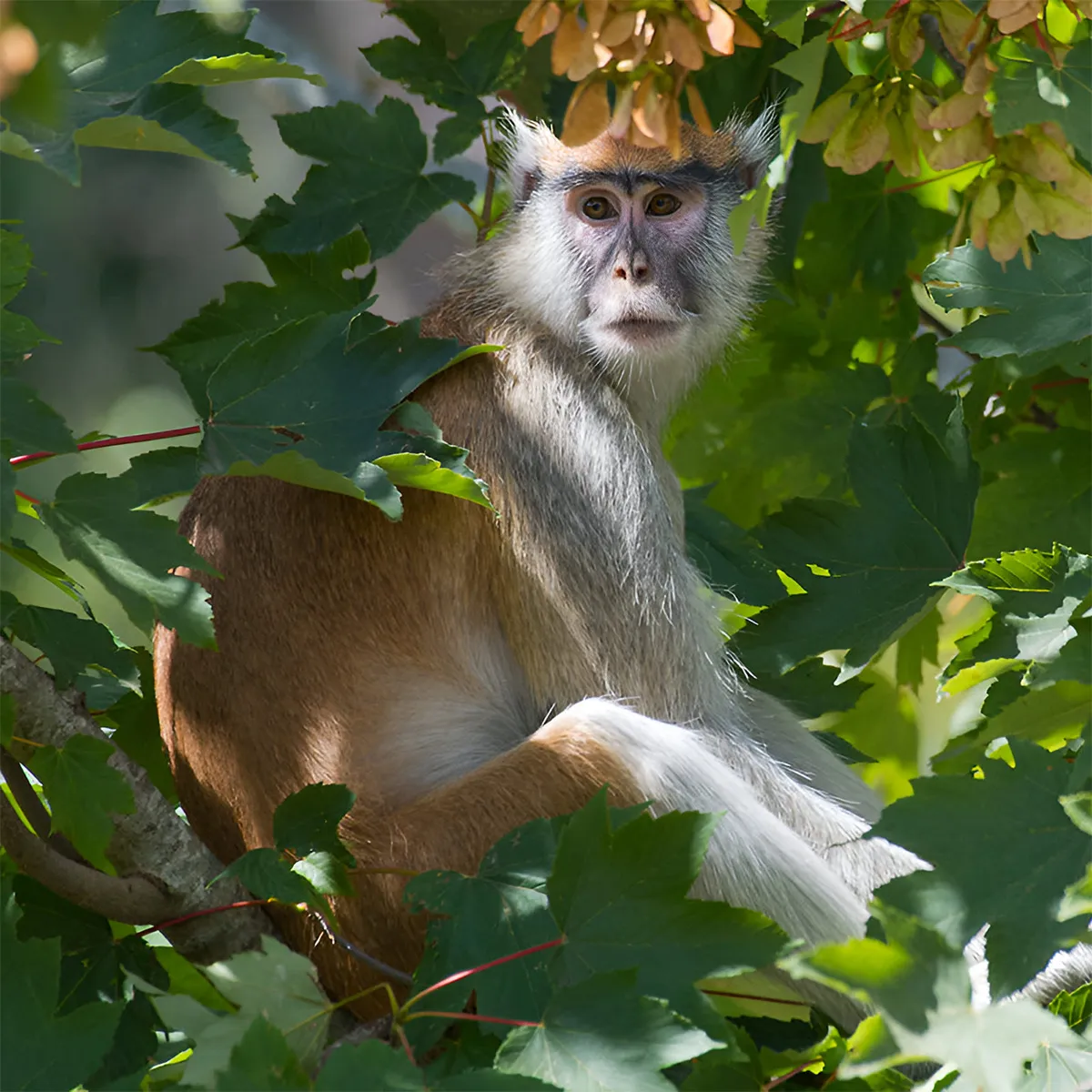
Also known as the red monkey or the weeping monkey, the patas is a primate of the cercopithecidae family. In the wild, it is found in open savannah-type environments. Able to run at speeds of over 55 km/h, with peaks of 80 km/h, it is the fastest land monkey. Omnivorous, they feed mainly on fruit and insects. The social structure generally consists of a male living with a group of up to 60 females.
Retour au blog Partager : Facebook Twitter
Barbary macaque
Publié par Jonathan Patin le Monday 11 March 2019
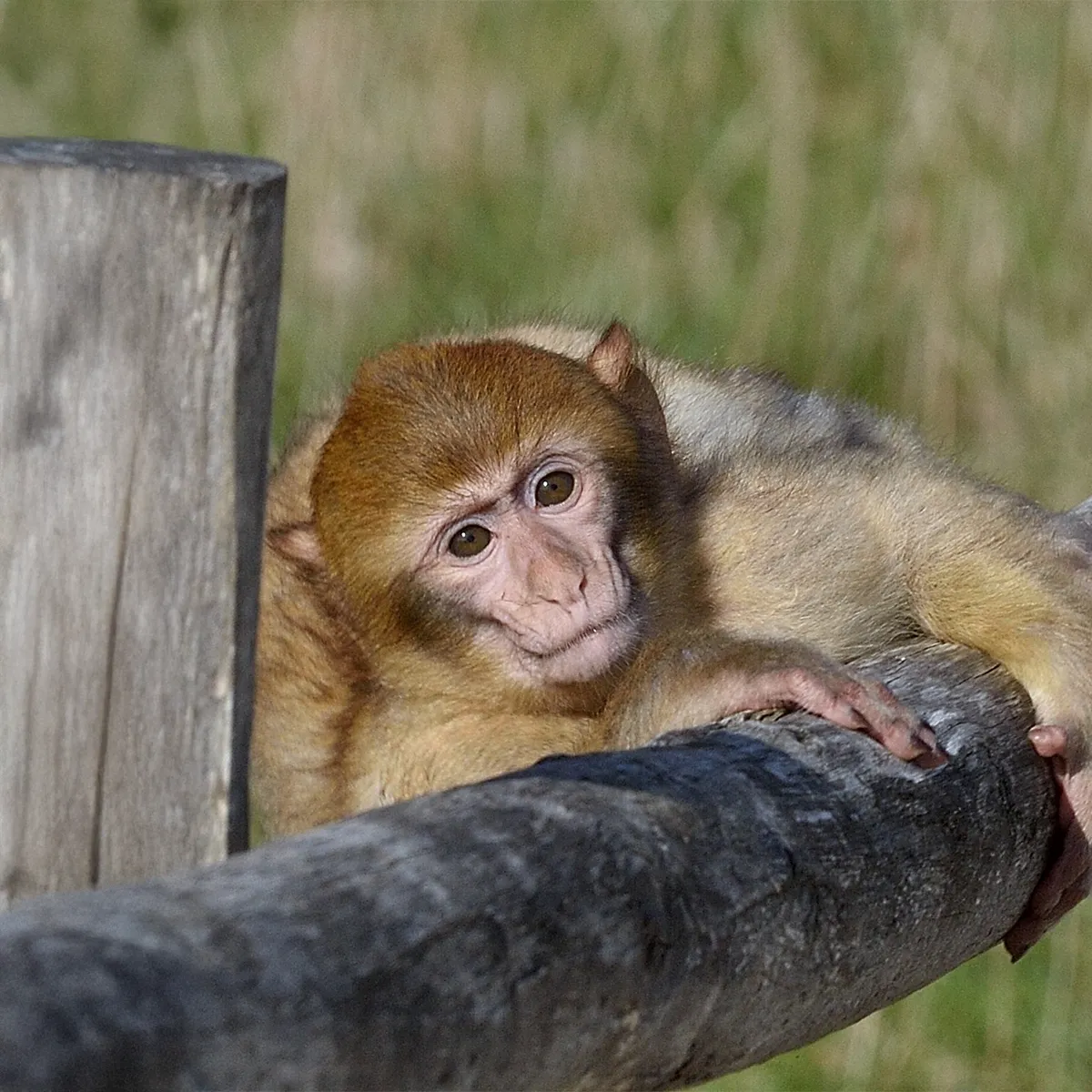
The Barbary macaque is a 4-seasons monkey, usually found north of the Sahara desert and in Europe.
A highly social individual, it lives in groups and feeds on fruit, leaves, bark, bulbs and mushrooms, as well as insects and other small invertebrates. At night, they climb into the trees to sleep, safe from predators…
With fewer than 10,000 individuals in the wild, the species has been considered in danger of extinction since 2008, yet it has no European breeding program, only a European studbook (second level of European breeding program for endangered species).
Retour au blog Partager : Facebook Twitter
Gelada
Publié par Jonathan Patin le Sunday 10 March 2019
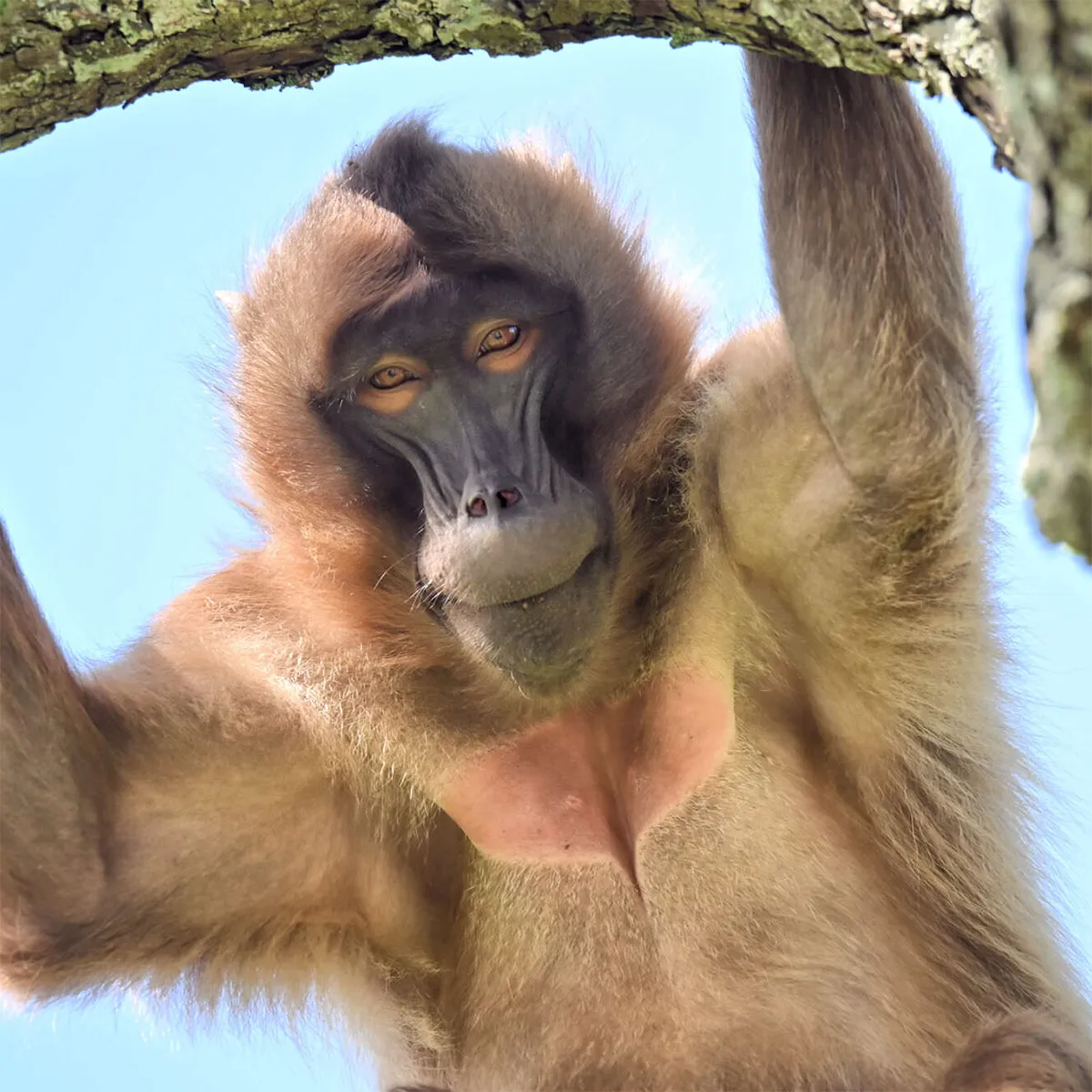
The Gelada is a primate that lives in the highlands of Ethiopia at altitudes ranging from 1,800 to 4,400 meters.
A herbivorous monkey par excellence, it feeds exclusively on herbaceous plants. Highly social, the Gelada can live in groups of up to 500 individuals. Sexual dimorphism is very marked. Males weigh up to 18 kg and have very long, mane-like coats. Smaller females weigh an average of 11 kg and have shorter coats.
Both males and females have an hourglass-shaped area of bare pink to red skin on their torso. In females, during heat, this hourglass changes from pink to bright red, signalling to the male his receptivity. This species benefits from a European breeding program.
Retour au blog Partager : Facebook Twitter
Golden lion tamarind
Publié par Jonathan Patin le Friday 15 February 2019
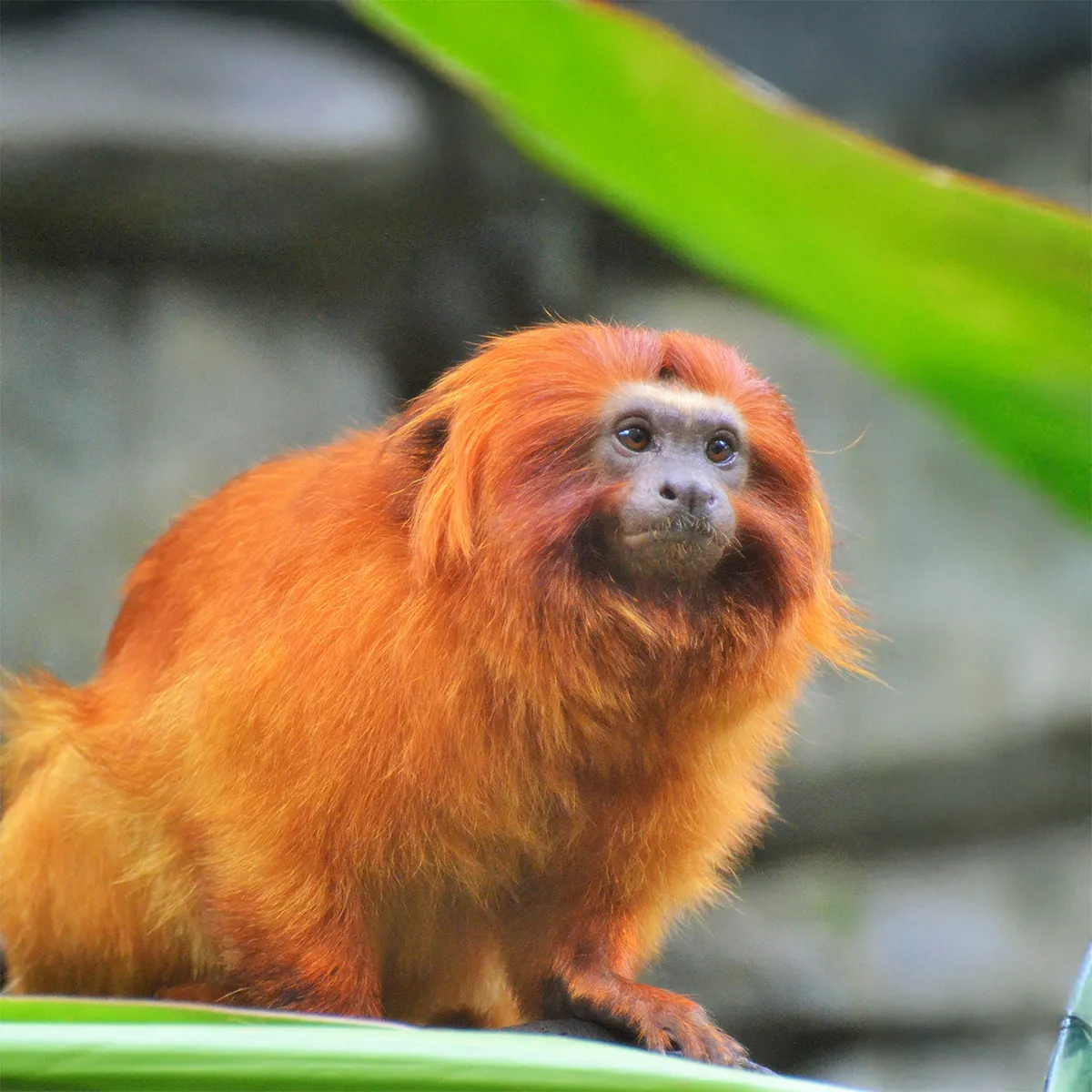
The golden lion tamarind is the largest of the tamarinds. Native to South America, it is diurnal, arboreal and lives in groups of 5 to 6 multi-male, multi-female individuals. It feeds on insects and fruit, which it searches for in plants or on the ground, as well as spiders and frogs. This small primate is managed as part of an European breeding program.
Retour au blog Partager : Facebook Twitter
Emperor tamarin
Publié par Jonathan Patin le Friday 15 February 2019
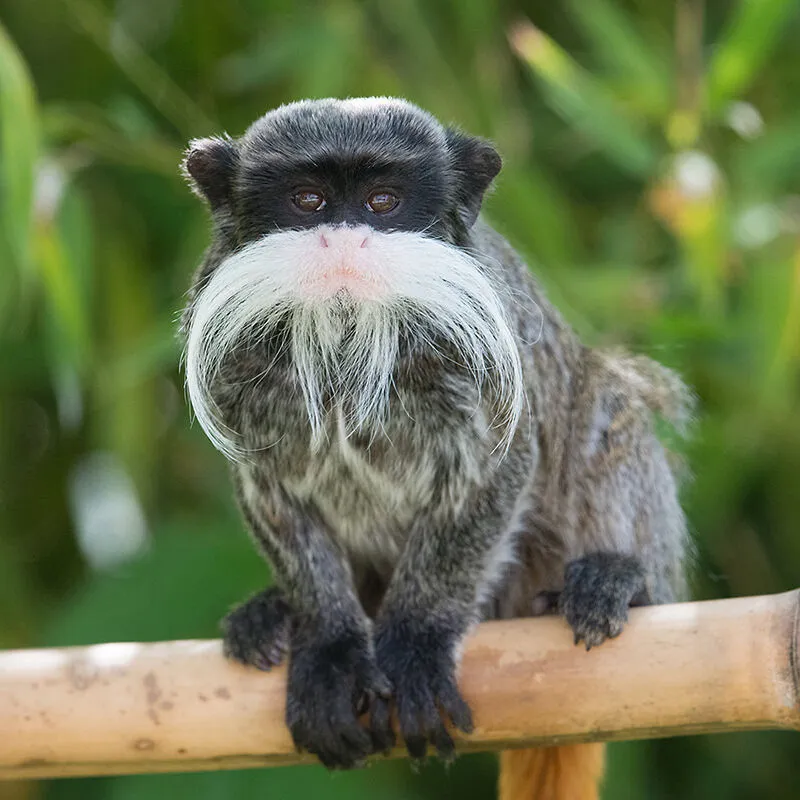
A small south-american primate, it lives by day, forming mixed groups with other species, multi-male uni-female from 3 to 8 individuals. It feeds on insects and fruit, which it searches for in plants or on the ground, as well as gum and sap, depending on the season. It is managed by an European breeding program.
Retour au blog Partager : Facebook Twitter
Goeldi’s marmoset
Publié par Jonathan Patin le Friday 15 February 2019

The Goeldi’s tamarin is diurnal, arboreal and lives in groups of 2 to 8 multi-male, multi-female individuals. It lives very well with other species such as emperor tamarins, douroucoulis and howler monkeys.
It consumes mainly leaves and fruit. It is the most vegetarian of all tamarins. Found in Bolivia and Colombia, in tropical dry forests, it doesn’t like damp areas and lives in the canopy. It is managed by a European breeding program.
Retour au blog Partager : Facebook Twitter
White-headed marmoset
Publié par Jonathan Patin le Friday 15 February 2019
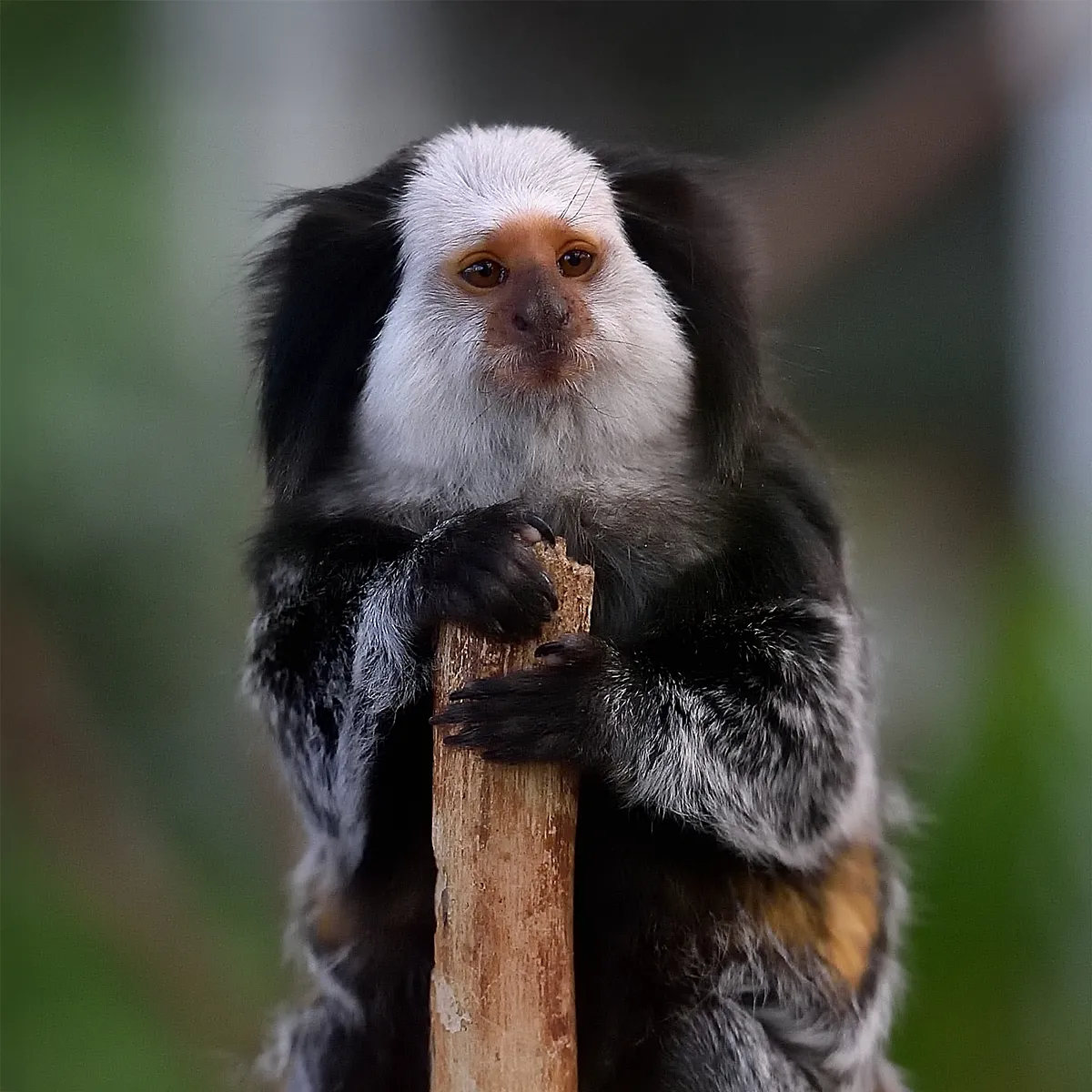
A small primate native to South America, this diurnal callitricid lives in groups of around 9 multi-male, multi-female individuals.
Fast and agile, it can climb up to 500 m in altitude. In the wild, it prefers secondary forest to primary forest or forest edges.
Callitricids are the only monkeys whose nails have evolved into claws, enabling them to move more easily on the tree trunks in which they live. Their coat is blackish-brown with grayish tints above and dark brown below. Their tails are ringed in black and gray. They are unique in having long black tufts around their ears, and a large white mask that overhangs their face.
Geoffroy’s marmosets eat a variety of foods. They are gommivorous, frugivorous and insectivorous. They are managed by a European breeding program.
Retour au blog Partager : Facebook Twitter
Mongoose lemur
Publié par le Saturday 2 February 2019
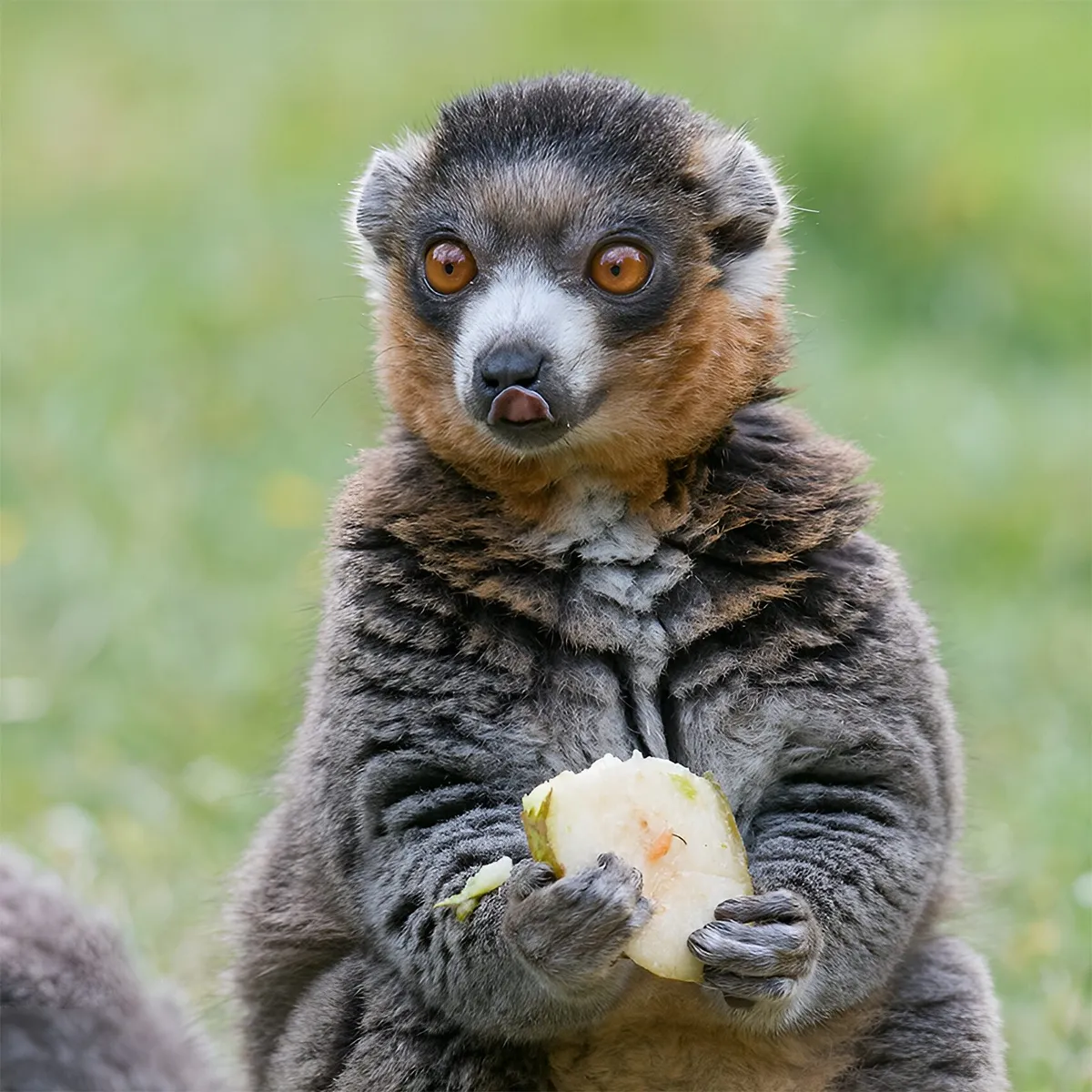
The mongoose lemur closely resembles the crowned lemur. It lives in the dry forests of Madagascar’s northwestern cove. The male is characterized by a reddish throat and a darker coat than the ruffed lemur. The female has a white throat. This is the most discreet lemur in the park, although it can sometimes be very inquisitive with visitors… The mongoose lemur is the subject of an European breeding program, as well as a natural rehabilitation program.
Retour au blog Partager : Facebook Twitter
Black lemur
Publié par le Saturday 2 February 2019

Known as the black lemur, due to the complete black coloration of the male, this is the lemur with the greatest dimorphism. They are native to the Nosy Be region. Highly territorial, they are one of the dominant species on our islands. Black lemurs have been the subject of an European breeding program since 1992.
Retour au blog Partager : Facebook Twitter
Crowned lemur
Publié par le Saturday 2 February 2019
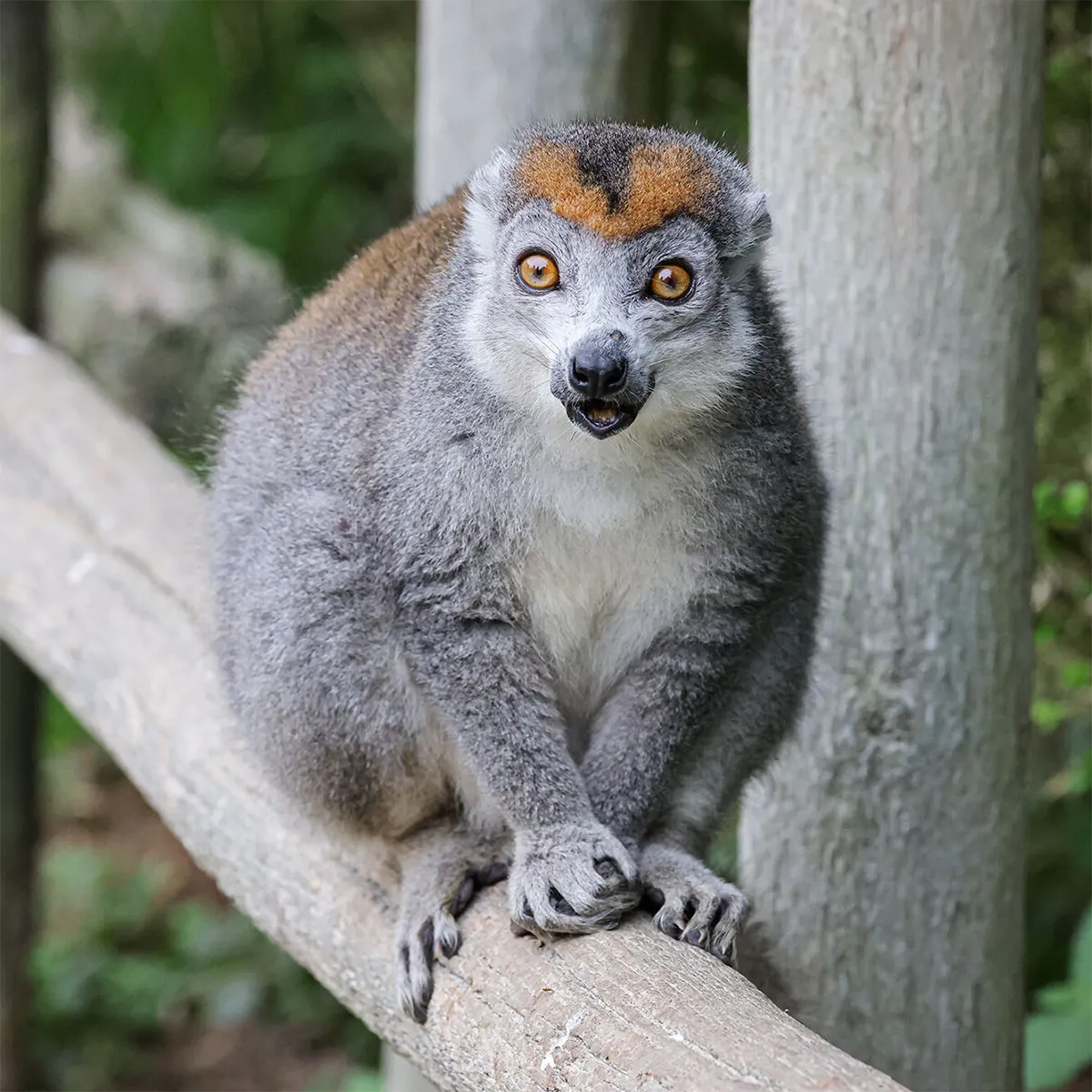
The smallest species of lemur in the park, but also one of the fastest.
The incredible surface area given over to them in the park (1 hectare) corresponds to half their home range in the wild…
Both males and females have a crown of orange hairs around their face. In the male, the crown is a full circle with a brown coat, while in the female, it’s more like a half-crown, against a background of gray fur. The crowned lemur has been the subject of a breeding program since 1996.
Retour au blog Partager : Facebook Twitter
Red-bellied lemur
Publié par le Saturday 2 February 2019
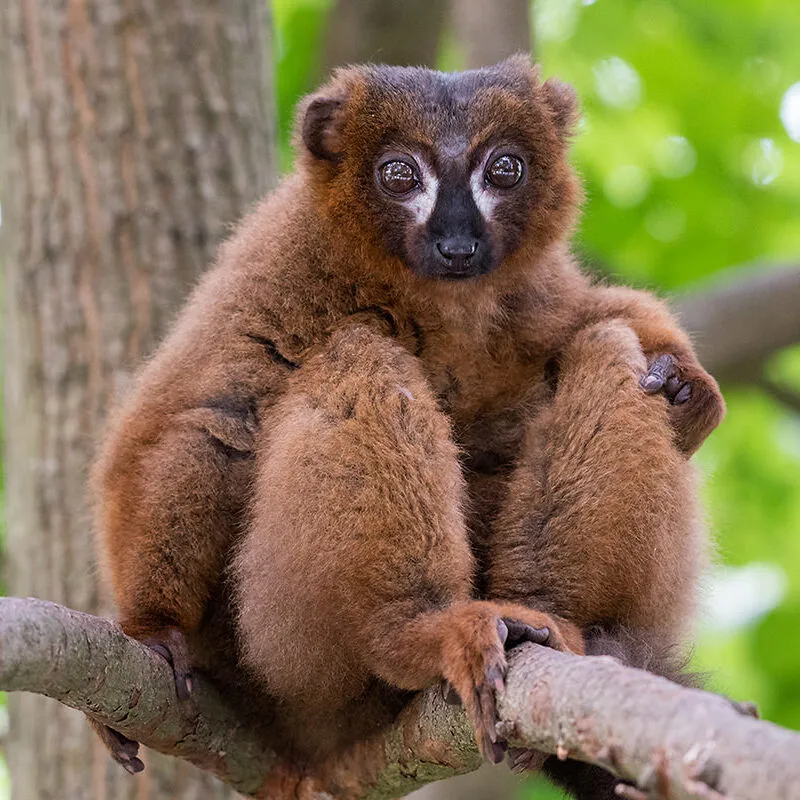
A relatively discreet species, the red-bellied lemur is characterized by sexual dimorphism between males and females. Females have cream-colored bellies and dark brown coats. The male, on the other hand, has a completely dark brown coat, with a white area under the eyes, and a fragrant mucus gland on the forehead… They generally live in pairs on the eastern flank of the island of Madagascar. The red-bellied lemur has been the subject of a breeding program since 2007.
Retour au blog Partager : Facebook Twitter
Red-ruffed lemur
Publié par le Saturday 2 February 2019

The red-ruffed lemur is native to northeastern Madagascar, on the Masoala Peninsula. Living in the canopy, groups of red-ruffed lemurs regularly sing a powerful territorial song, which can be heard over a 30-hectare area… A special feature is that the red-ruffed lemur is the only lemur that shelters its babies in a nest, usually in a hollow tree. The red-ruffed lemur has been the subject of an European breeding program since 1990.
Retour au blog Partager : Facebook Twitter
Ring-tailed lemur
Publié par le Saturday 2 February 2019

It’s undoubtedly THE most familiar lemur to young and old alike. Highly sociable, the maki catta lives in groups of up to 30 individuals. Known for its meditative pose in front of the sun, during which it uses UV rays to activate the production of its body odor, the maki catta is native to southern Madagascar. At the park, we managed to get two clans of makis to live together. Unique in the world! The maki catta has been the subject of a breeding program since 1994.
Retour au blog Partager : Facebook Twitter
